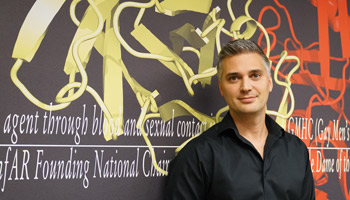In Transplant-Driven Cures, What’s in Play Beyond the CCR5 Mutation?
An animal model helps define the importance of immunity in eradicating latent HIV
By Jeffrey Laurence, M.D.
Research question
A bone marrow, or stem cell, transplant involving a donor with a CCR5 delta32 mutation is currently the only approach proven to eradicate HIV that hides out in reservoirs and thereby effect a cure in people living with HIV (PLWH). But the rarity of such a mutation—it is found primarily in some people of Northern European descent—and side effects related to the transplant itself greatly limit the number of PLWH who could benefit directly from the intervention.
However, researchers are studying the individual mechanisms by which the transplant cure method works not only to understand the process completely but also to see if this knowledge might be applied to other, more scalable ways of eradicating HIV. One open issue is the extent to which CCR5-deficient donor stem cells are required to drive a transplant-related HIV cure, as opposed to allogeneic immunity (a graft-versus-host response that occurs after a stem cell transplant) driven by the donor T cells regardless of their CCR5 status.
Findings
Scientists based at Oregon Health & Science University utilized a species of monkey with limited tissue type diversity, enabling identification of suitable donors for an animal-to-animal stem cell transplant. Four monkeys were infected with SIV, the simian equivalent of HIV, and treated with antiretroviral therapy (ART). After 9–17 weeks of undetectable virus on ART, they underwent a stem cell transplant. Some 2–2.5 years later, ART was stopped and levels of active and latent virus in blood and tissues were examined. All four animals had a 1,000-fold reduction of the viral reservoir in blood, lymph nodes, and intestines. The one animal that achieved a complete reconstitution with donor cells has no detectable virus and appears to have been cured.

Impact
The authors conclude that so-called “allogeneic immunity” has “the power to eliminate immunodeficiency virus reservoirs.” They suggest that harnessing such immunity outside of transplantation may develop “novel approaches to HIV cure that can be applied more broadly across PLWH.”
amfAR’s role
amfAR was a funder of this research. Authors of this paper include Jonah Sacha, Ph.D.
Original article
http://www.ncbi.nlm.nih.gov/pubmed/37236188
Dr. Laurence is amfAR’s senior scientific consultant.
Share This:
